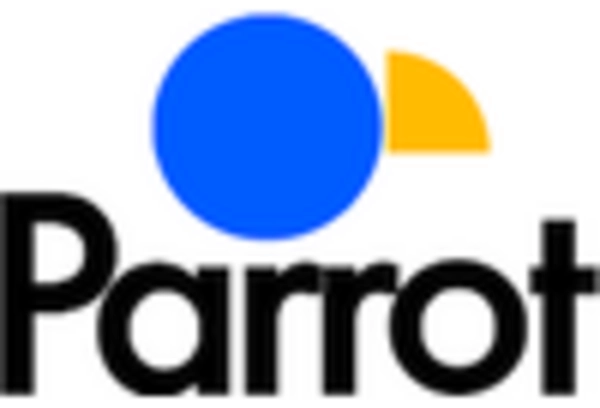Emerging Applications
The Consumer Drone Market is witnessing a surge in emerging applications that extend beyond traditional uses. Drones are increasingly being utilized for recreational purposes, such as aerial photography, racing, and even agriculture. The rise of drone delivery services is also noteworthy, with companies exploring the potential for using drones to deliver goods directly to consumers. This shift is expected to create new revenue streams and expand the market. According to industry estimates, the drone delivery segment alone could account for over USD 5 billion by 2027. Furthermore, the integration of drones in real estate for virtual tours and inspections is gaining traction. As these applications evolve, they are likely to attract a diverse consumer base, thereby enhancing the overall growth of the Consumer Drone Market.
Regulatory Developments
Regulatory developments play a crucial role in shaping the Consumer Drone Market. Governments worldwide are increasingly establishing frameworks to ensure the safe operation of drones, which is essential for public acceptance and market growth. For instance, regulations regarding airspace usage, privacy concerns, and safety standards are being implemented to mitigate risks associated with drone operations. The Federal Aviation Administration (FAA) in the United States has introduced rules that require drone operators to register their devices, which has led to a more organized market. As of 2025, it is estimated that compliance with these regulations has contributed to a 15% increase in the number of registered drones. This regulatory clarity is likely to foster consumer confidence, thereby stimulating growth in the Consumer Drone Market.
Technological Advancements
The Consumer Drone Market is experiencing rapid technological advancements that are reshaping the landscape. Innovations in battery technology, such as lithium polymer batteries, have significantly increased flight times, allowing drones to operate for longer periods. Additionally, improvements in camera technology, including 4K and 8K resolution capabilities, have enhanced the quality of aerial photography and videography. The integration of artificial intelligence and machine learning algorithms is also becoming prevalent, enabling drones to perform complex tasks autonomously. According to recent data, the market for consumer drones is projected to reach USD 10 billion by 2026, driven largely by these technological enhancements. As manufacturers continue to innovate, the Consumer Drone Market is likely to see an influx of new models and features, appealing to a broader range of consumers.
Consumer Demand for Aerial Photography
The growing consumer demand for aerial photography is a significant driver in the Consumer Drone Market. As social media platforms continue to thrive, individuals and businesses alike are seeking high-quality aerial images and videos to enhance their online presence. Drones equipped with advanced cameras are becoming essential tools for content creators, real estate agents, and event planners. Recent surveys indicate that approximately 60% of drone users cite photography as their primary use case, underscoring the importance of this segment. The market for drones specifically designed for photography is projected to grow at a compound annual growth rate of 12% over the next five years. This increasing demand for aerial imagery is likely to propel the Consumer Drone Market further, as manufacturers respond with specialized products tailored to meet these needs.
Increased Investment in Drone Technology
Increased investment in drone technology is a pivotal factor driving the Consumer Drone Market. Venture capital and private equity firms are increasingly recognizing the potential of drones, leading to substantial funding for startups and established companies alike. This influx of capital is facilitating research and development efforts, resulting in innovative products and services. For instance, investments in drone software solutions are enhancing operational efficiency and expanding the capabilities of consumer drones. As of 2025, it is estimated that investment in the drone sector has reached USD 3 billion, reflecting a growing confidence in the market's future. This financial backing is likely to accelerate advancements in drone technology, thereby fostering growth in the Consumer Drone Market.

















Leave a Comment